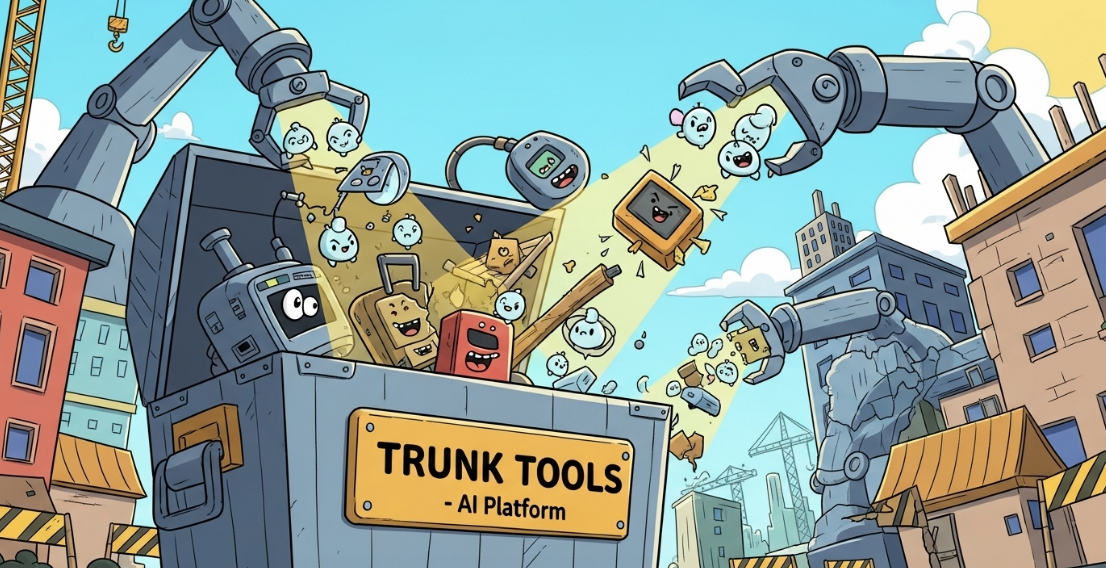Think about the last time you renovated your home or watched a building go up in your neighborhood. Behind the scenes, there’s an astonishing amount of waste happening that you probably never see. The construction industry, despite being one of the largest sectors in the global economy, remains shockingly outdated when it comes to technology.
Here’s what’s really happening on construction sites around the world. Workers are drowning in paperwork that contradicts itself. Plans change daily, but documentation doesn’t keep up. Electricians show up to install an outlet that isn’t on the blueprints. Contractors get conflicting orders and have no way to quickly search through thousands of pages to figure out what’s actually supposed to happen. The result? Work gets done twice, materials end up in landfills, projects run over budget, and deadlines slip further and further away.
The numbers are staggering. This chaos costs the construction industry nearly one trillion dollars every year in lost productivity. While automotive and aerospace companies invest heavily in technology, construction companies historically spend less than one percent of their revenues on IT systems. That’s less than a third of what other industries consider normal.
Sarah Buchner saw this problem firsthand. Growing up as the daughter of a carpenter in Austria, she worked her way through the construction ranks in America, eventually overseeing a four hundred million dollar high-rise project with six hundred workers. When a workplace fatality occurred on one of her sites, she realized the industry needed fundamental change. She initially focused on health and safety software, but as AI technology advanced, she saw an opportunity to solve a much bigger problem.
That’s when she created Trunk Tools, and this is where the real value comes in for you if you’re involved in construction or real estate development. Imagine having a platform that can digest millions of pages of construction documents, blueprints, drawings, schedules, and specifications, then restructure all that chaos into clear, searchable information that actually makes sense. Think about a typical high-rise project in a major city costing half a billion dollars. You’re looking at roughly three and a half million pages of documentation that changes every single day.
What Trunk Tools does is use AI and machine learning to take all that unstructured mess and turn it into something your teams can actually use. When your electrician needs to know where that emergency exit door outlet should go, they can find the answer in seconds instead of spending hours searching through conflicting documents. When plans change overnight, everyone knows about it immediately.
The value proposition here goes beyond just saving time, though that alone would be significant. You’re looking at massive reductions in material waste, which means lower costs and a smaller environmental footprint. You’re eliminating the need to redo work because someone followed outdated plans. You’re catching conflicts before they become expensive problems on the job site. You’re keeping projects on schedule and on budget.
For developers and construction companies, this means protecting your bottom line while delivering projects faster and more efficiently. For general contractors, it means your teams spend less time hunting for information and more time actually building. For project managers, it means you can identify risks before they derail your timeline.
The construction industry has been waiting for this kind of innovation, and investors are taking notice. Trunk Tools recently secured forty million dollars in new funding, bringing their total investment to seventy million dollars. The company is now partnering with Microsoft to integrate this technology into tools that construction professionals already use every day.
What makes this particularly exciting is that the technology addresses a problem that touches nearly every construction project, from residential developments to commercial high-rises to infrastructure projects. The inefficiencies aren’t going away on their own, and as projects become more complex and regulations more stringent, the documentation challenges only grow worse.
For anyone involved in construction or real estate development, the question isn’t whether AI will transform the industry. It’s whether you’ll be among the early adopters who gain a competitive advantage, or whether you’ll be playing catch-up while your competitors deliver projects faster, cheaper, and with less waste.







